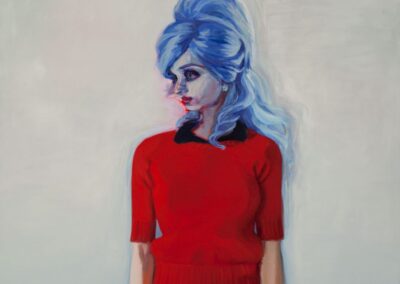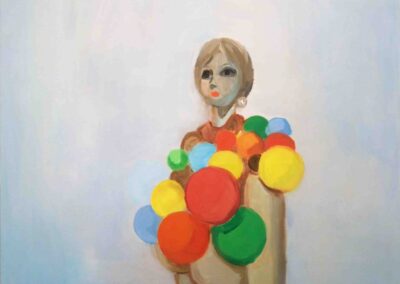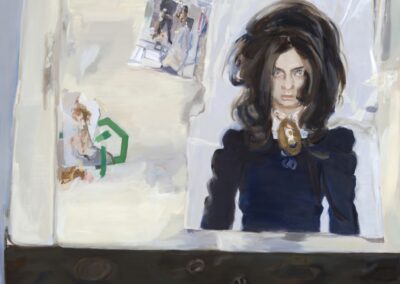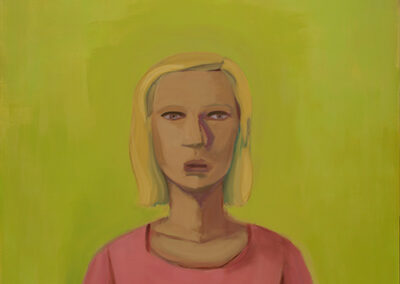Our latest Artist You Need To Know is among the first rank of contemporary painters. Janet Werner has been exploring the intricacies and contradictions in portrait painting for several decades, with her large works that often dominate a room, or even seem to dwarf the viewer when they ‘encounter’ each other.
-

Girl in Brown Suit, 2009
-

Red Sweater, 2012
-

Smearcase, 2011
-

The Glove, 2010
-

Girl With Planets, 2015
-

Maiden, 2014
Currently based in Montreal, her paintings ‘focuses on the fictional portrait as a vehicle to explore notions of subjectivity and desire.’ Although clearly within the formal framework of ‘conventional portraiture’ (sometimes using images from popular culture, found and appropriated), her figures are part of a larger narrative, and her subjects have a uniqueness that makes it easy to assign them personalities and back stories. When confronted with her ‘people’, they often seem illustrative of a fictional persona: in this respect her ‘painting is a way of investigating the iconic power of the image, invoking imagination, memory, and projection to invest the nameless figure with human subjectivity and emotion. The final paintings are composite portraits that retain aspects of the original while also embodying notions of transformation, innocence and loss.’ (from her Wikipedia page).
Werner has exhibited extensively across Canada and beyond: her work is represented in the collections of Musée national des beaux-arts du Québec (MNBAQ), Galerie Leonard & Bina Ellen Art Gallery, MacKenzie Art Gallery, Remai Modern (formerly the Mendel Art Gallery), Winnipeg Art Gallery and Kenderdine/College Art Galleries. During her tenure teaching at the University of Saskatchewan (1987 – 1999), Werner had a strong role in defining painting on the Prairies, before leaving to teach at Concordia University from 1999 to 2019.
-

Folding Woman, 2009
-

Untitled (Gallery), 2017
-

Girlfriend, 2014
-

Stalker, 2012
-

Sticky Picture, 2017
-

Blondie / Joan, 1998
Her most recent works are perhaps her most engrossing, yet also somewhat unsettling: there ‘is an argument between beauty and the grotesque, and the figure itself has become the site of contest. Folded, cut, occluded, or altered, with colours ranging from luminous to ashen, and scale shifting from pixie to giant, the figures possess an otherworldly aspect.’ (from her page at the Concordia University site)













